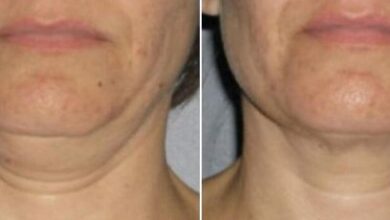Parenchymal Echogenicity: Understanding the Basics

Have you ever wondered about the term ” echogenicity” and its significance in medical diagnostics? If you’re curious to delve into the world of ultrasound imaging and gain a deeper understanding of this concept, you’ve come to the right place. In this article, we will explore parenchymal echogenicity, its meaning, its relevance in healthcare, and how it is assessed. So, let’s get started!
1. What is Parenchymal Echogenicity?
Parenchymal echogenicity refers to the characteristic brightness or darkness observed on an ultrasound image of a tissue or organ. Ultrasound machines emit sound waves that penetrate the body and bounce back, creating echoes. These echoes are then converted into visual representations, allowing healthcare professionals to examine and diagnose various conditions.
2. The Importance of Parenchymal Echogenicity in Medical Imaging
Parenchymal plays a crucial role in medical imaging as it helps in identifying abnormalities, determining tissue characteristics, and monitoring disease progression. By analyzing the echogenicity of organs and tissues, medical professionals can detect structural changes, such as inflammation, fibrosis, tumors, or fatty infiltration, which may indicate underlying health issues.
3. Factors Affecting Parenchymals Echogenicity
Several factors influence the echogenicity of parenchymal tissues. These include the density, composition, and texture of the tissue, as well as the angle of the ultrasound beam and the frequency of the ultrasound waves used during imaging. Understanding these factors is essential for accurate interpretation and diagnosis.
4. Normal vs. Abnormal Parenchymals Echogenicity
Different tissues exhibit varying degrees of echogenicity. In general, highly reflective tissues appear brighter or hyperechoic on ultrasound, while less reflective tissues appear darker or hypoechoic. However, it is essential to note that what is considered normal or abnormal echogenicity depends on the specific organ or tissue being evaluated.
5. Evaluating Parenchymal Echogenicity: Techniques and Tools
To assess parenchymal echogenicities, medical professionals employ various imaging techniques such as grayscale ultrasound, Doppler ultrasound, and elastography. Grayscale ultrasound provides a detailed view of the tissue’s internal structure, while Doppler ultrasound measures blood flow within the tissue. Elastography, on the other hand, evaluates tissue stiffness, aiding in the diagnosis of conditions like liver fibrosis.
6. Clinical Applications of Parenchymals Echogenicity Assessment
Parenchymals echogenicity assessment has numerous clinical applications across different medical specialties. In hepatology, it helps diagnose liver diseases such as hepatitis, cirrhosis, and fatty liver. In urology, it aids in evaluating kidney and bladder conditions. Similarly, it plays a role in assessing the thyroid, breast, and prostate, among other organs.
7. Challenges and Limitations in Interpreting Parenchymal Echogenicities
While echogenicity analysis is a valuable diagnostic tool, it is not without its challenges and limitations. Variations in ultrasound settings, operator expertise, and patient factors can affect the interpretation of echogenicity. Additionally, certain conditions may cause atypical echogenic patterns, making accurate diagnosis more complex.
8. Future Trends in Parenchymal Echogenicities Analysis
As technology continues to advance, the field of parenchymals echogenicity analysis is evolving. Researchers are exploring the use of artificial intelligence and machine learning algorithms to improve diagnostic accuracy and streamline the interpretation process. These advancements hold great promise for the future of medical imaging.
9. Conclusion
Parenchymal echogenicity serves as a vital parameter in ultrasound imaging, enabling healthcare professionals to identify and diagnose various conditions. Understanding its significance and the factors influencing it is crucial for accurate interpretation. As medical technology advances, we can expect further refinements in parenchymals echogenicity analysis, leading to improved patient care and outcomes.
Frequently Asked Questions (FAQs)
- Q: Can parenchymal echogenicities assessment be performed on any organ or tissue? A: Yes, parenchymal echogenicities can be evaluated in a wide range of organs and tissues using ultrasound imaging.
- Q: What are some common causes of abnormal echogenicity? A: Abnormal parenchymal echogenicities can be caused by inflammation, infection, tumors, fibrosis, or fatty infiltration, among other factors.
- Q: Is echogenicity analysis a painful procedure? A: No, echogenicity analysis is a non-invasive and painless procedure that utilizes ultrasound imaging.
- Q: Can echogenicity assessment detect early-stage diseases? A: Yes, by detecting subtle changes in tissue echogenicity, parenchymal echogenicities assessment can aid in the early detection of diseases.
- Q: How often should parenchymal echogenicities be monitored for chronic conditions? A: The frequency of monitoring parenchymal echogenicities depends on the specific condition and the recommendations of the healthcare provider.




